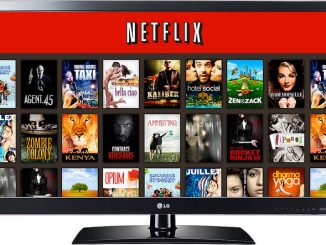In his recent coverage on video streaming giant Netflix Inc (NFLX), Barron’s Tiernan Ray said the stock could plunge 40 percent from current levels based on its price-to-earnings ratio, market share, and other factors. The latest NFLX article may shake the longs and negatively affect the stock, which has had quite a choppy ride since entering fiscal year 2016. Priced at more than 334 times this year’s forecasted earnings, compared to the industry’s 4.78x earnings multiple, Netflix stock is constantly being placed under the Street’s microscope.
“At 97 times [forward] earnings, Netflix shares are more sizzle than steak, and that sizzle is beginning to fade”, Ray writes, noting that investors who value the equity in anticipation of strong growth in profits over the long haul, better think again.
While a few positive catalysts exist for the company, the author suggests that as growth in the United States matures further, CEO Reed Hastings will have to re-shape Netflix by maintaining his sight on rapid international expansion as a way to boost investor confidence.
The suggestion underscores again an important shift in Netflix’s business model. As growth for the company’s domestic streaming service slows, Netflix is increasingly basing its earnings future on an aggressive international expansion. The company has recently gone global, apart from China. The expansion however, comes at a price as initiatives to create and acquire original content are hurting profitability. In fact, during the last five quarters, Netflix has not been able to add to its cash flow position. The Los Gatos, Calif.-based company burned $276 million in Q4, and nearly $1 billion total in fiscal year 2015.
In the fourth-quarter 2015 shareholder letter under the subheading “Free Cash Flow and Capital Structure”, Netflix reminded its shareholders of the intensive nature of its capex in original content.
“As a reminder, our investment in originals, particularly owned content, requires more cash upfront relative to licensed content, which will continue to dampen free cash flow…Given our expected cash needs, we are likely to raise additional debt in late 2016 or early 2017,” the company explained.
The $41.57 billion market cap company reported $2.07 billion in cash versus $2.37 billion in debt in its most recent quarter. That compares to a negative trailing-12 operating cash flow of about $850 million.
With growing competition in the content industry from major players like Amazon.com (AMZN), Hulu, and Comcast Corporation (CMCSA), Netflix will have to continually provide its investors with positive news and long-term developments and expectations in order for its stock – the most expensive in the S&P 500 – to justify its current valuation. That said, the premium price-per-share, not increased competition, seems to be, at least for the time being, the biggest problem for Netflix.
Stock Action
After finishing fiscal 2015 as the top-performing stock in the S&P 500 with an impressive return of 134 percent, Netflix shares are down more than 15 percent year-to-date.
Ticker has fallen more than 39% between the December 4, 2015 peak and the $79.95 low in February 8, 2016. The shares however, have risen 22% since with the stock finding some support at around $95. Should they drop below that level, the next support looks like $92 and then $90.
NFLX shares rose $1.96, or 2.06 percent, Friday to close at $97.06 on 8.3 million volume.
- Bulenox: Get 45% to 91% OFF ... Use Discount Code: UNO
- Risk Our Money Not Yours | Get 50% to 90% OFF ... Use Discount Code: MMBVBKSM
Disclaimer: This page contains affiliate links. If you choose to make a purchase after clicking a link, we may receive a commission at no additional cost to you. Thank you for your support!





Leave a Reply